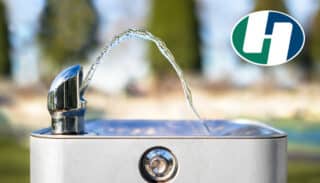It is no question that water is a fundamental human need. Every person needs approximately 20 to 50 liters of clean, safe water each day for various needs like drinking, cooking, and safely maintaining hygiene.
Polluted water isn’t just dirty — it can be deadly. Studies from the Pacific Institute Research Report state that each year, more than 5 million people die globally from diseases caused by unsafe drinking water, improper sanitation, and insufficient water for basic hygiene.
The majority of people impacted by insufficient water supplies are concentrated in less developed parts of the world. Even so, it is equally important for those of us in more developed nations to also remain mindful of the threats associated with contaminated water, including ways to better optimize conscious usage.
Common Ways Water Can Become Contaminated
Sewage (Fertilizer)
Sewage doesn’t pose as big of an environmental concern as some other pollutants, but it does present dangers to our water sources. In small amounts, waste breaks down naturally and does no harm to water at all. In large amounts, it can deplete the amount of oxygen in the water. When not enough oxygen is in a body of water, surrounding aquatic life can be compromised.
Acid Rain
Although acid rain is less of a threat than it has been in the past, it still remains a major pollution problem today. The burning of fossil fuels releases compounds that will interact with the H2O in the air, creating a toxic raindrop that includes nitric and sulfuric acid. This chemical pollutant pours from the sky into the water and soil. If water supplies happen to be coming from a reservoir, lake, or stream that has an acid water build-up, the local water company will be monitoring acid levels within the source.
If there were to be a threat present, a boiling alert would be instilled. Having a filtration system can be an extra way to protect a property against these acidic contaminants. In the case that you have well-water, you are more likely to be contaminated without proper filtration. When you receive the required annual tests of your water, you can monitor any rise in toxins, and adjust accordingly.
Non-point Sources
Water pollution can happen in one of two ways, by means of non-point or point systems. Non-point pollution comes from indirect sources, like agricultural runoff, mining or mineral waste, road paving, and construction or industrial activity. Nonetheless, toxic compounds trickle into water systems through rainwater drainage, melting snow, and running streams. With non-point water pollution it’s nearly impossible to trace the original polluter.
Asbestos is a dangerous non-point water source contaminant. This natural mineral can make way into our water through damage to dated water pipes (asbestos cement pipes), natural deposits in the ground or from the improper abatement process from building debris. Ingesting asbestos can lead to the rare but devastating cancer, peritoneal mesothelioma.
The Oil Industry
Everything about the oil industry from drilling, transporting, laying pipeline, shipping, and end user consumption can present a possibility for water pollution. From extreme cases like oil rigs damaged by bad weather, to barges that undergo accidental leaks, the oil industry is a major danger to clean water and aquatic life.
Thermal Pollution
Thermal pollution can be just as damaging as bacterial or sediment pollution. Power plants are the largest contributors of toxic pollution to waters. Thermal pollution occurs when sudden temperature increase or decrease to a natural body of water happen due to human influence. This most commonly occurs when a power plant or manufacturing facility takes in water from a nearby resource as a cooling method for their machinery, then returns it back into the environment, contaminated.
In 2013, the U.S. Environmental Protection Agency reported that power plants dump more pollutants (mercury, arsenic, lead) into our waters than the next nine industries combined.
Health Threats Associated with Unsafe Water Sources
Many factors affect the possible impact on health from contaminated water. The age and general health of an individual, the type of contaminant, the amount consumed, and how long the person has been drinking the contaminated water will dictate the threat.
Effects of drinking contaminated water can be immediate and short-term, while others may not be noticed for years and result in more serious illnesses.
Learn more about health effects and water-related diseases:





